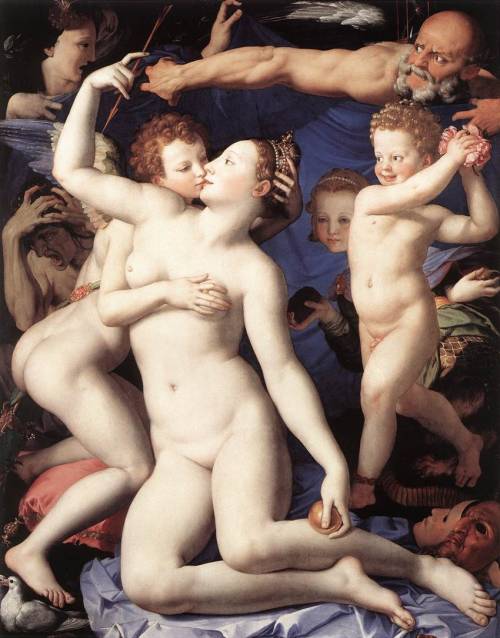Iconography
Group Assignment 1 100 points
Please refer to the image provided for this assignment.
1. Figure looking in distress at the revealed scene.
2. Figure in anguish.
3. Winged boy caressing figure 4, stealing crown.
4. Woman stealing arrow from figure 3, associated with the dove and golden orb.
5. Old man with wings, hourglass, wielding the blue cloth.
6. Half-monster figure with backwards hands and honey-comb.
7. Small boy with flowers.
8. Masks
In small groups please discuss the 8 picture elements listed above and their possible symbolic or allegorical meaning. For each item describe what you think may be a plausible explanation. Please write at least two sentences for each item.
In a final paragraph of at least 6-8 sentences, put all the pieces together and describe how the narrative functions in a totality. What is the message or moral of the allegory? How do the figures relate to larger themes or ideas that they may represent? There is no wrong answer, but your explanation must be plausible and show a sufficient amount of inquiry and explication.
Please do not look the image up. Obvious cheating in this regard will be penalized!
If you are already familiar with the image please notify me in advance.
Please hand in one copy for the entire group with all names listed.
Although there will probably only be one typist, you must all make contributions. It is highly advisable to obtain respective e-mails so that the assignment can be proof-read by all group members.
Poor grades are not a reflection of the typists contribution, since you all must approve your assignment before handing it in.
Objectives:
• Demonstrate understanding of the use of symbols and allegory in iconographic images.
• Demonstrate understanding of historical context and its relationship to form.
• Demonstrate understanding of theme.













